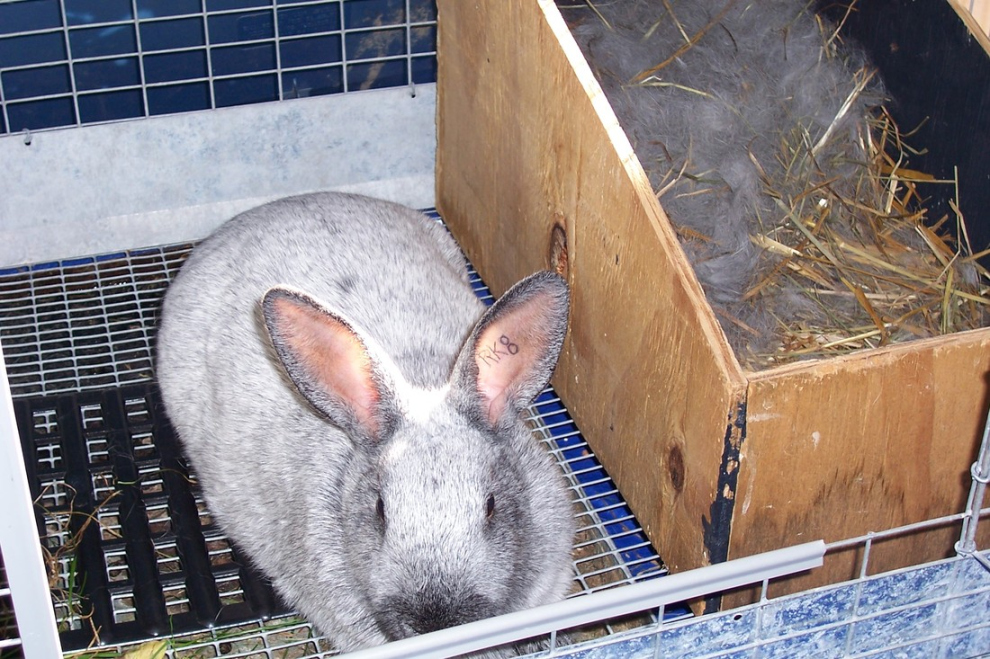How Big Should a Rabbit Nesting Box Be?
Providing a suitable nesting box is essential for the comfort and well-being of rabbits during the breeding season. The nesting box serves as a safe and secure space for the mother rabbit (doe) to give birth and nurse her young. However, it is crucial to ensure that the nesting box is appropriately sized to meet the needs of the doe and her growing litter. Let’s delve into the factors to consider when determining the size of a rabbit nesting box.

1. Breed and Size of the Rabbit
The breed and size of the rabbit play a significant role in determining the size of the nesting box. Larger rabbit breeds, such as Flemish Giants or New Zealand Whites, will require more space compared to smaller breeds like Netherland Dwarfs. A general rule of thumb is to provide a nesting box that is at least four times the length of the fully grown doe.
2. The Number of Kits
The number of kits (baby rabbits) a doe is expected to have also impacts the size of the nesting box. It is essential to provide sufficient space for all the kits to comfortably nurse and move around. A larger litter will require a bigger nesting box to accommodate their needs. As a guideline, each kit should have approximately five square inches of space.
3. Room for Nesting Material
Rabbits instinctively build nests to keep their kits warm and protected. They use bedding materials like straw, hay, or shredded paper to create a cozy environment for their young ones. Therefore, the nesting box should have enough space to allow for an ample amount of nesting material. The presence of nesting material also helps in regulating the temperature and humidity inside the box.
4. Accessibility and Ventilation
While size is crucial, accessibility and ventilation are equally important factors to consider when designing a nesting box for rabbits. The box should have a low entrance, allowing the doe to easily enter and exit. It should also have adequate ventilation to prevent the buildup of heat and moisture, which can be harmful to both the mother and the kits.
Recommended Nesting Box Sizes
Based on the factors mentioned above, here are some recommended nesting box sizes for different rabbit breeds:
- Small Breeds: For small breeds weighing under 4 pounds, a nesting box with dimensions of 12 inches (length) x 10 inches (width) x 8 inches (height) should suffice.
- Medium Breeds: Medium-sized breeds weighing between 4 and 8 pounds will require a slightly larger nesting box measuring around 16 inches (length) x 12 inches (width) x 10 inches (height).
- Large Breeds: Larger rabbit breeds weighing over 8 pounds might need a more spacious nesting box, with dimensions of approximately 20 inches (length) x 14 inches (width) x 12 inches (height).
FAQs
1. Can I use a cardboard box as a nesting box for my rabbits?
While cardboard boxes may seem convenient, they are not ideal for nesting boxes. Rabbits have a tendency to chew, and cardboard can easily be destroyed, potentially harming the kits. It is recommended to use a more robust and easy-to-clean material, such as wood or plastic, for nesting boxes.
2. How often should I clean the nesting box?
The nesting box should be cleaned regularly to maintain a clean and hygienic environment for the rabbits. Remove any soiled bedding material and replace it with fresh, clean material. Cleaning every 3-4 days is typically sufficient, but it may vary depending on the number of kits and the cleanliness of the doe.
3. Can I use a larger nesting box than recommended?
Providing extra space in the nesting box may seem like a good idea, but it can actually be counterproductive. Too much space can lead to the kits scattering, making it difficult for the doe to keep them warm and protected. It is best to stick to the recommended nesting box size for optimal comfort and care.
4. What if the doe rejects the nesting box?
In some cases, the doe may choose not to use the provided nesting box and instead create her own nest somewhere else. If this happens, it is essential to observe the situation closely and ensure that the new nest is safe and suitable for the kits. Make sure it is warm, secure, and easily accessible for the doe to care for her young.
Remember, providing an appropriately sized nesting box is crucial for the health and well-being of rabbits during the breeding season. Considering the breed and size of the rabbit, the number of kits, sufficient space for nesting material, and proper accessibility and ventilation will help ensure a safe and comfortable environment for the mother rabbit and her young ones.
Related Articles…
Copyright Notice:
All images featured on this site are sourced from the internet, copyrights belong to respective owners. Should you own any image and require it to be removed, please contact us.